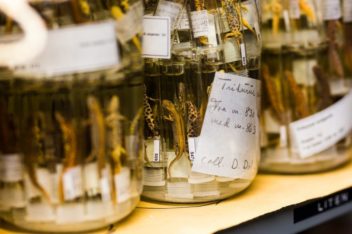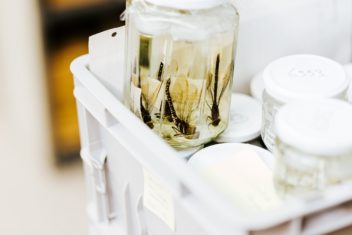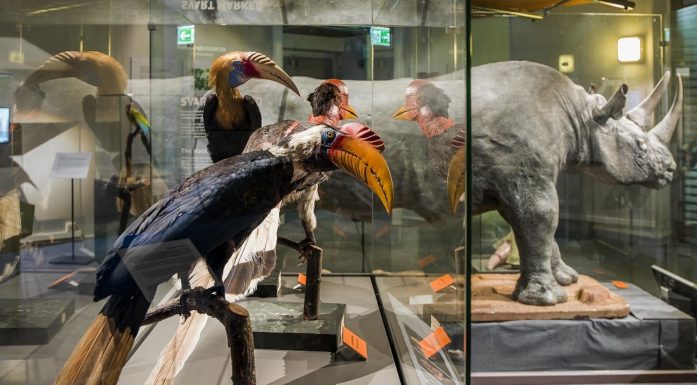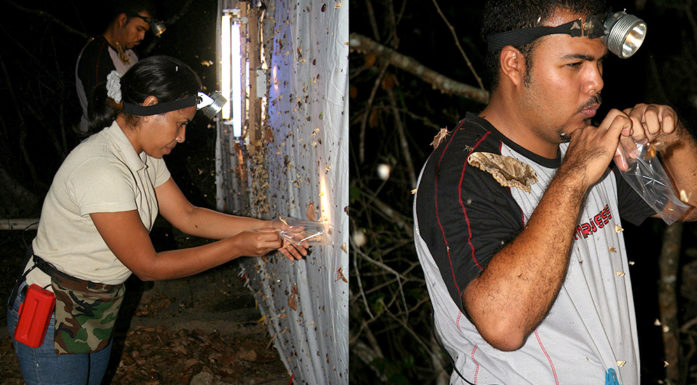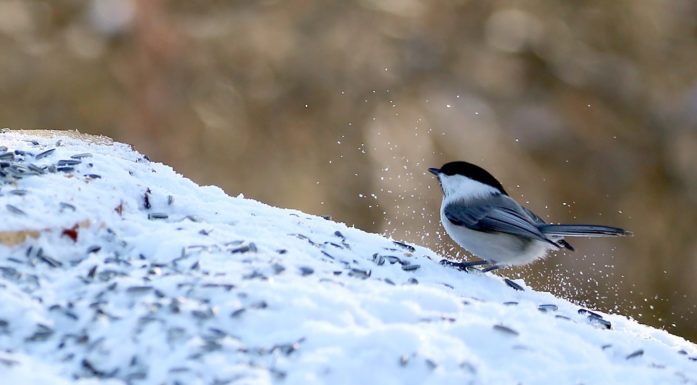Hundreds of thousands of dead in the basement
The NTNU University Museum’s animal collection is approaching a landmark one million specimens. We take a peek behind the scenes.
The basement of the Norwegian University of Science and Technology’s (NTNU) University Museum looks like the pantry of a cook willing to pickle just about anything. Hundreds of thousands of dried and preserved specimens fill the space. Newer plastic bins stand alongside older cardboard boxes from the farm cooperative Gartnerhallen.
Everything is densely packed in glass jars or boxes.
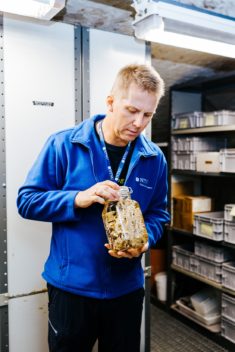
This coral is common in Norway. But it hadn’t been identified as a separate species before Australian expert Kirrily Moore’s recent visit to the museum. Photo: Julie Gloppe Solem, NTNU
“So often you hear that people don’t trust research. We think you have to be able to verify research. The blueprint for that is right here,” says Torkild Bakken, head of NTNU’s Department of Natural History. Part of his job includes responsibility for some of the museum’s collections, in particular the marine invertebrates.
“Here we have three rooms where we take care of our natural heritage,” says Bakken.
The zoological collections at the NTNU University Museum total 960,000 objects. Bakken is responsible for around 140,000 of them. The three rooms in the museum’s cellar are only a small part of everything the museum has to offer.
- You might also like: New sea slug species found in northern waters
Seeing more use
The museum has had an active collection of marine animals since Vilhelm Storm collected material at Rødberg in the Trondheimsfjord in the 1870s. But specimens from the 1700s are also part of the collection. The concept of time is perhaps a little different here than in most other places.
“I consider myself a colleague of Carl Dons, even though he died 20 years before I was born,” says Bakken.
Nature researcher Carl Fredrik Lindemann Dons wrote a lot about life in the ocean along the Norwegian coast. He died in 1949 but his work remains relevant — perhaps just as much as when he was alive.
Researchers are increasingly relying on the material in the collection. Taxonomy, the system for classifying species, wasn’t a popular field of study a few decades ago. But access to modern methods offers new and exciting opportunities.
DNA analysis has become the basis for species identification. It is also a new tool for modern researchers who are clearing up old mistakes, which requires a lot of detective work.
This process leads to new species appearing in the collections – some that were miscategorized because earlier taxonomists could often only go by appearances. Other times the opposite is the case, where different specimens turn out to be variants of the same species. Genus and family relationships need to be clarified and adjusted.
- You might also like: Dark lords, werewolves, and Indiana Jones in the polar night
Relevance
On one shelf is a considerable collection of salamanders. The big ones are on the red list in Norway.
“We can’t just collect anything we want now. There’s a lot of old material here,” says Bakken.
But the collection needs to be added to all the time, not only because new species are being discovered, but because some of the old specimens break down and become unsuitable for DNA identification.
“The collection has to be kept relevant,” says Bakken.
Fully 95 per cent of the collection in Trondheim is now digitized and registered in a database. The museum cooperates with a species database maintained by the Norwegian Biodiversity Information Centre.
NTNU also has primary responsibility for the Norwegian Barcode of Life (NorBOL). This is the Norwegian contribution to the international effort to provide all species with their own DNA barcode, the Barcode of Life Initiative.
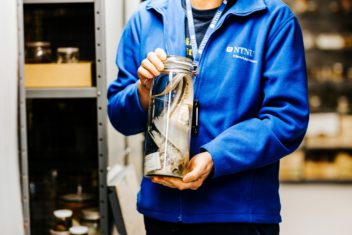
A rabbit (or rat) fish. The species is not actively fished, but it is still threatened. Photo: Julie Gloppe Solem, NTNU
So far, nearly 14,000 Norwegian species are registered in a reference library. This library can be used for research and management. Much of the material comes from the museum’s collections.
- You might also like: Uncovering the secrets of arctic seabird colonies
Collections in several places
These shelves hold big tubes of fish. They look a little tired.
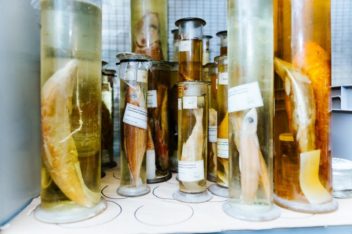
The fish collection is a little tired. Most of Norway’s fish experts are in Bergen. Photo: Julie Gloppe Solem, NTNU
“Not too much activity in here,” says Bakken.
The last fish expert at the NTNU University Museum was Gustav Swenander, who was active well over 100 years ago. In Norway, the University Museum of Bergen has an active research program on fish, so it’s natural for the museums to work together to keep the fish collections up to date.
That’s how it works in this country, says Bakken. The big universities cooperate to share the responsibility. Each of the universities in Oslo, Bergen, Tromsø and Trondheim has large collections, but for a real overview of the described life forms in Norway you have to see them together.
In many cases, individual researchers who had very specialized fields of interest were the driving force for how the museum collections evolved.
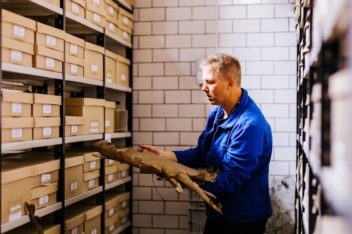
Could this be a black skate? Torkild Bakken is a bit uncertain here. Photo: Julie Gloppe Solem, NTNU
Bristle worms and sea slugs
“Could this be a black skate?” the professor wonders, as he holds a dried fish in his hands. He is also an expert on sea slugs and bristle worms.
Bakken is more at home holding a huge bristle worm that must be at least a half-meter long. This particular one is American, but you can find Norwegian bristle worms almost as big, if you know where to look.
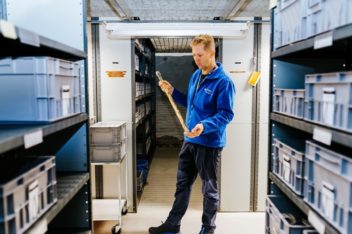
Torkild Bakken holding a huge American bristle worm. Norwegian ones get almost as big. Photo: Julie Gloppe Solem, NTNU
The king ragworm is found on the shore, for example. You can find it on beaches after it’s done spawning. Then it dies and the gulls have their fill.
DNA analysis has led to the discovery of many previously unknown life forms. Bakken has registered several new species, both for Norway and the world – including lots of sea slugs.
“The problem with sea slugs is that they’re really beautiful in nature, but when they’re preserved in ethanol here, they look like used chewing gum,” says Bakken, and holds out something that indeed resembles some already-been-chewed gum.
“Nope,” he says, “this is a Dendronotus, a genus of sea slugs, also known as a bushy backed nudibranch. “They’re really lovely when you look at them in ocean photos.”
You might also like: New sea slug species found in northern waters
From one to several hundred specimens
The museum has hundreds of specimens of some species, and of other species just a single sample. Some can fit in tiny vials. Others require more space.
Jar upon jar of common hawker dragonflies, Aeshna juncea, line the shelves. Linnaeus described this species as far back as 1758, about the same time that the museum’s oldest specimens are from. It’s an advantage to have numerous specimens in order to be able to see their variations.
“It’s especially challenging when we only have one or two individuals,” says Bakken.
Individuals of the same species will usually have morphological variation, and often differences in DNA, and more copies enable us to see the variations specific to this particular species, he adds.
Museum staff are extremely careful whenever they remove specimens that are vulnerable species or from vulnerable locations.
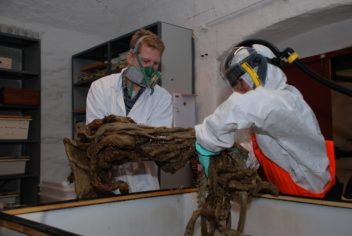
Museum staff opened the giant squid tank in 2011 to record the specimens and change their fluid preserve. Archive photo: Per Gätzschmann, NTNU University Museum
For example, Bakken and his colleagues regularly travel on NTNU’s research vessel R/V Gunnerus to retrieve new material. They prefer to carefully gather their samples with an underwater robot instead of just pulling up random samples. They collaborate with geologists from the Geological Survey of Norway (NGU) and with technologists from NTNU’s Department of Marine Technology (IMT).
Lots of work
The collections require a lot of maintenance. Around 10 people are actively registering specimens, refilling containers and otherwise maintaining the collections at any given time.
Bakken dreams of a larger technical staff, needed both in the field and in the laboratories.
A deep tank holds six giant squid, all found on beaches along the Trøndelag coast. They usually keep to the large ocean depths, and we know very little about how they live there. But these particular specimens are in the researchers’ control to study.
The fluid preservative they are in is evaporating and has to be replaced. When other people order fluid preserve for scientific purposes, they usually just need a few splashes worth to clean their equipment. The quantity required here is a bit different.
When the museum folks refill the squid tank with preservative, it usually takes 200 litres, or 200,000 millilitres, as the order form notes.
“The order forms aren’t exactly designed for our level of use,” says Bakken.
But all the work is worth it. Documenting is important – it is the basis for science and research, its very core, no less.
“We’ve been doing this for 250 years, and we plan to keep it up for a while yet,” says Bakken.
























